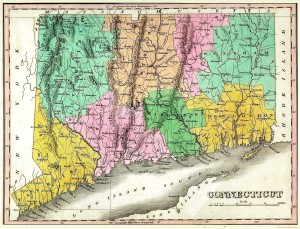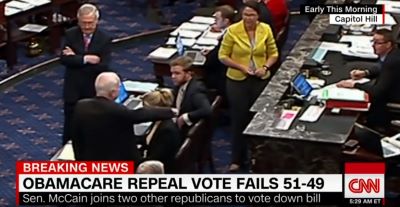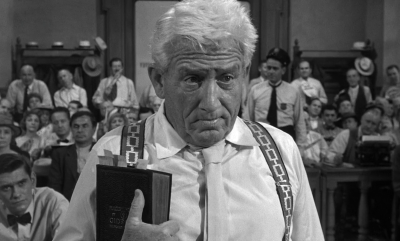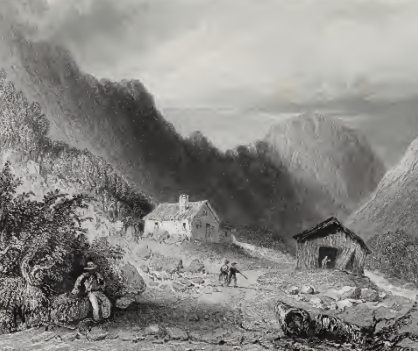
Our neighbor state has been trying to promote the teaching of history in the schools. The Connecticut League of History Organizations (CLHO), an organization similar to the Museum Association of New York, sent a notice to its members to take a survey with the message: “We NEED your help to get Connecticut history into the hands of Connecticut teachers and students.”
The goal of this effort was stated as “LET OUR TEACHERS KNOW THAT CONNECTICUT HISTORY IS ALIVE AND WELL.” CLHO asked the question which could be asked in New York as well: “Connecticut’s history rarely ever makes it into the classrooms in our state. Why?”
CLHO was reaching out to its members as the people best poised to take a leadership role in making state history accessible to teachers everywhere, when they wrote: “As a historical society volunteer, a board member, a docent, an archivist, a librarian, or in any other paid or unpaid staff job, there is no one better qualified than you are to identify those local stories that will enthrall and excite our Connecticut kids.”
CLHO also seeks to use History Day as an opportunity to encourage students to learn about state history: “One of our top goals is to encourage students, parents and teachers to choose topics in Connecticut history for their History Day projects.”
New York, of course, is active in History Day as well. It would be interesting to know how many of the topics selected in New York for History Day are about history in New York. Certainly here is an opportunity to promote local history.
CLHO pointed out that the theme for the contest this year – Rights & Responsibilities in History – could be addressed with local incidents and events. The survey therefore asked the CLHO members to identify possible topics based on their local history. A series of specific questions were asked to determine if a certain type of event occurred in each of the state’s towns or regions such as: “Do you have photographs or other archival material which would be of use? Would you be willing to work with teachers and students in preparing their presentations?”
As part of the effort CLHO is hosting a History Day kick-off event. This event will bring together historical re-enactors and the persons they portray. It seems as if they intend to bring together the theatre of storytelling with the scholarship. Considering that we are a storytelling people and I just wrote about using one’s local history as the basis for a play or musical, this effort is welcomed. The different constituencies of the history community that I frequently write about as not working together in New York are all invited to participate in this conference: teachers, students, parents, historical organizations, and two Central Connecticut State University historians. That university has taken it upon itself to be an active leader in the state history programs in Connecticut.
In addition to this free program, there will be a fee-event in the afternoon and evening. It will comprise a panel, dinner and performance on Interpreting History entitled “Not What Happened – Interpreting History.” Funding for these events was provided in part by Connecticut Humanities and the New England Foundation for the Arts somewhat similar to NYCH and NYSCA in New York. Nice to see these organizations working together. Imagine if the same could be done in New York, not just at the state level but at the regional levels which are more comparable in size to Connecticut. Perhaps if New York History Day became a more state- and local-based program that reached out to the community, New York State History Month that State Historian Bob Weible just wrote about would be easier to resurrect. Perhaps that could be a topic at a meeting he will call.
If you have any comments about this effort, you can direct them to Liz Shapiro, Director of the Connecticut League of History Organizations (liz@clho.org or 860-685-7595).
P.S. When Liz isn’t busy with History Day, she participates in six regional conferences covering the state on various topics or themes. Admittedly the state is smaller than New York, but you may recall my recommendation that the history community could get more bang for Cuomo’s $1,000,000 bucks if we had 10 people for each of the then-10 Path regions where each one would the job of doing in their region what Liz is doing at the state level. And what ever happened with that $1,000,000 anyway?






N.Y. EDUC. LAW § 801 contains a number of requirements with respect to the teaching of history in New York. E.g. “The regents shall prescribe courses of instruction in the history, meaning, significance and effect of the provisions of […] the constitution of the state of New York and the amendments thereto, to be maintained and followed in all of the schools of the state. The boards of education and trustees of the several cities and school districts of the state shall require instruction to be given in such courses, by the teachers employed in the schools therein. All pupils attending such schools, in the eighth and higher grades, shall attend upon such instruction.”
I don’t recall even being taught that there was a constitution of the state of New York at Bell Top, Glenmont, or (relevant to the last sentence quoted above) Bethlehem Central, much less the “history, meaning, significance and effect of the provisions of the NYS Constitution and its amendments. Are Regents no-show appointments such that they can ignore their legal responsibilities?
New York’s Amistad Commission, similarly, has failed to issue a report or even have the requisite number of members for years. One of the several articles about that shameful failure: Hu, Winnie. “4 Years After Black History Panel’s Birth, Its Work Is Still Deferred.” N.Y. Times. February 11, 2009. One of the consequences, I’d argue, of that shameful failure: Carleo-Evangelist, Jordan. “Remains must not be ‘on a shelf forever’; Public thoughts wanted about where and how to rebury 14 slaves.” Albany Times Union. February 8, 2012: B1.
If the Regents and politicians are permitted to ignore their legal responsibilities, what kind of example do they set?
There is a new social studies curriculum about to be implemented. The last one was written in 1996 so it is missing a number of significant events.
So far the focus has been in the Common Core for language arts and STEM. Interestingly this has had and is having an impact on the teaching of social studies which the history community might not be aware of.
You may have noticed the November 5 post on the state social studies conference to be held in Albany March 27-29 on the theme of Linking Communities Together: Academic, Civic and Cultural. In the past conferences the decline of civics has been an issue and one I have written about in previous posts.
I intend to return to the subject of teaching social studies in my next post.
In general I can say here is another example in addition to the tourist one you mentioned in your other post, where the fractured, impotent, divided history community does not have a seat at the table and loses out.
“here is another example in addition to the tourist one you mentioned in your other post, where the fractured, impotent, divided history community does not have a seat at the table and loses out”
Perhaps, though with respect to N.Y. EDUC. LAW § 801 historians arguably have a seat at the table in the form of all the NY Regents who swear Oaths to the NY Constitution to do their jobs, and part of their sworn legal duty is to “prescribe courses of instruction in the history, meaning, significance and effect of the provisions of […] the constitution of the state of New York and the amendments thereto, to be maintained and followed in all of the schools of the state.”
At the very least, though, there’s Vice Chancellor Anthony S. Bottar who “taught social studies in the Rochester, New York area and lectured at the State University of New York at Buffalo; Regent James C. Dawson’s “personal interests include […] history (especially local history)”; Regent James O. Jackson has “a Masters Degree in History and Political Science from the College of Saint Rose, and a PhD in American History, Administration, Curriculum and Supervision from Northwestern University”.
Granted, even aside from their apparent failure to comply with NY’s Education Law they don’t pay much attention to New Yorkers either. My e-mail with the provocative (but accurate) subject line “serious problems of intimidation, retaliation, and non-compliance at SUNY?” sent to Merryl Tisch, Anthony S. Bottar, Robert M. Bennett, James C. Dawson, Geraldine D. Chapey, Harry Phillips 3rd, James R. Tallon Jr., Roger Tilles, Charles R. Bendit, Betty A. Rosa, Lester W. Young Jr., Christine D. Cea, Wade S. Norwood, Kathleen M. Kashin, James E. Cottrell, and Andrew T. Brown dated December 10, 2012 10:58:42 AM EST received not a single response. Evidently the NYS Board of Regents are unconcerned by such things?. You’d think it would have commanded their attention, particularly given the fact that SUNY was under investigation by the U.S. Department of Education at that time. Go figure!
Thanks Peter, for such kind words. I have to give a shout out to Connecticut’s Old State House, particularly History Day coordinator Rebecca Tabor-Conover, director Sally Whipple, and staff member Bruce Reinholdt, because they are really the movers and shakers. The CLHO has worked with them to get the History Day program into the hands of our CT heritage museums and historic sites. We believe that History Day has real potential to connect our historical societies with students, teachers and schools in a meaningful and long-term way. I’d also like to thank Connecticut Humanities, who is the primary funder of both History Day in Connecticut and the CLHO. Their funding enables our organizations to bring this high quality programming to our constituents across the state.
In my view the thing that would unleash a tidal wave of civic attachment, connectivity between local content and local learning, augment heritage tourism and preservation in the most general sense – would be if even 1/3 of the public money allocated for the arts every year – underwrote some this connectivity – instead of expecting dirt poor orgs to do more. To provide some guidance and especially financial help so they have an incentive and the resources to do more. Alas, that would have to be accompanied by a revelation among educators and edu bureaucracies that place and place-based learning matters – so they not only support this work but actually help underwrite the cost. In a small state like CT $10mill/year would be transformational. If I had a magic wand NEH and NEA and their state analogues would team up and create a substantial new grantline devoted to new media production… support to produce edu videos that showcase stuff and stories locally. There is no designated grant support for it anywhere even though Youtube. Vimeo etc have transformed how information is disseminated. For $3k or less I (and others) can produce outstanding short and medium format documentaries that provide a gateway introduction to local resources that hopefully would lead to field trips and deeper engagement and connectivity between schools and community-based historicals.
I am passionate about the economics of all this. We have this expansive delivery system for civic engagement – nothing remotely like it in the arts or preservation – or sciences – where we have organizations with content in 1000s of communities. More often than not the content is good enough and presented well enough that with a little imagination it could be integrated into the classroom learning experience – everywhere – bringing the humanities home where it belongs and underscoring the message that places like people have worth and individuality – and that a place that mines and grapples with its local history is teaching a life skill invaluable anywhere.
This comment is from a reader who wishes to remain anonymous.
This is a brilliant concept. I know Liz well and have worked with her. If only New York state could be as active as CT. This effort serves the purpose of educating the public while promoting local museums and historic sites and keeping them alive for future generations.